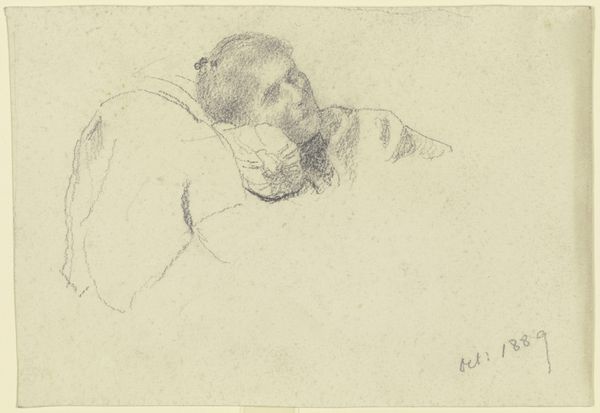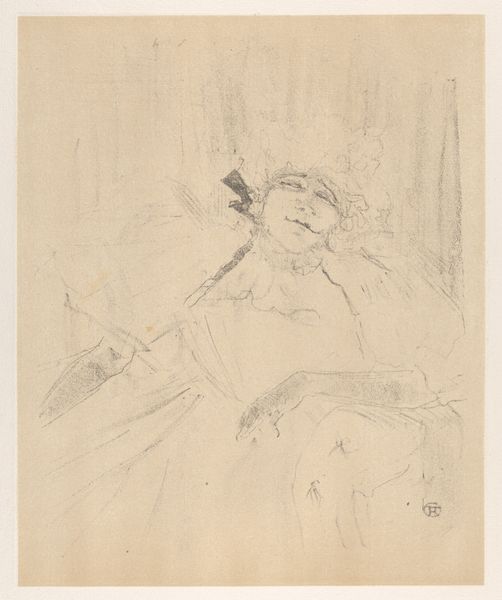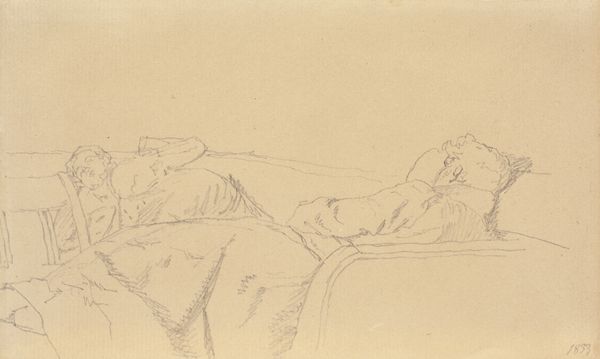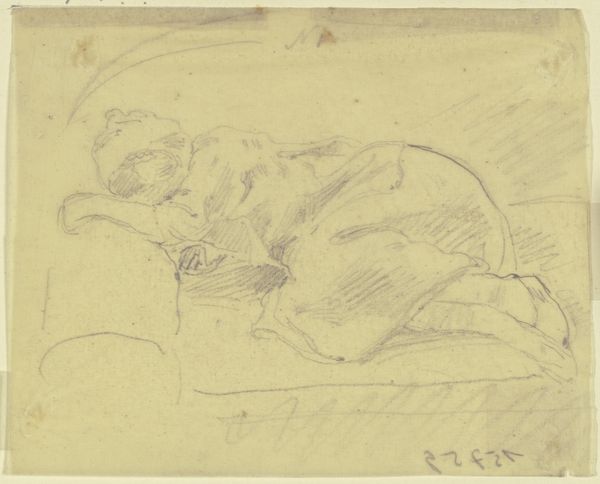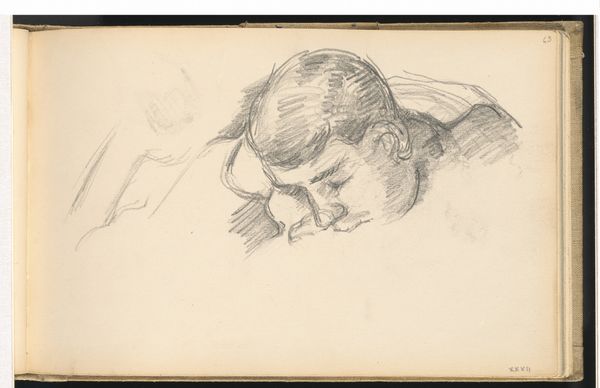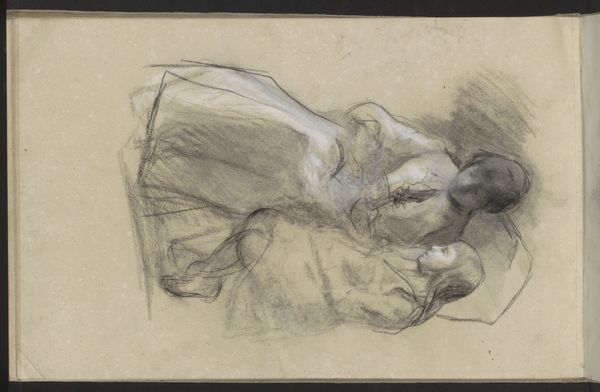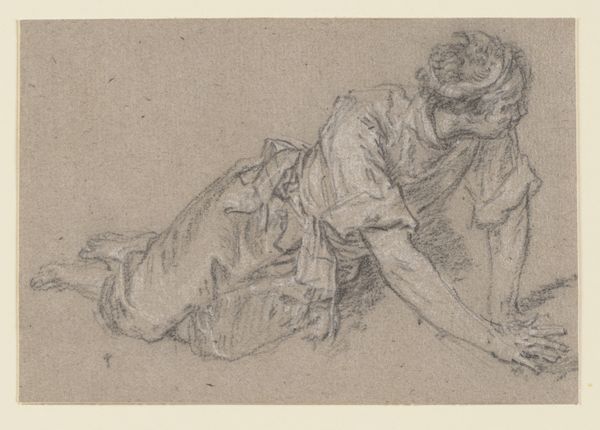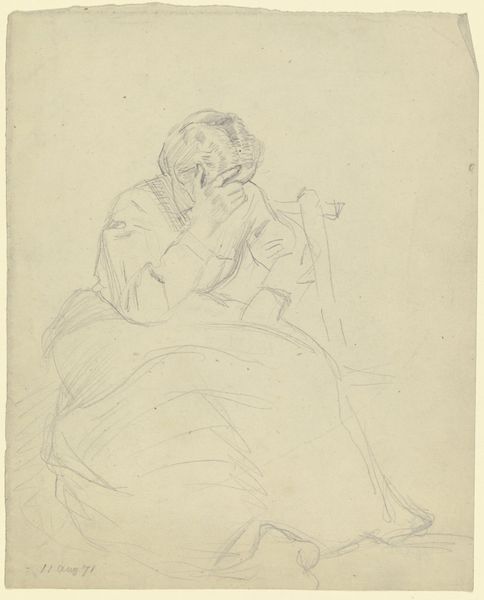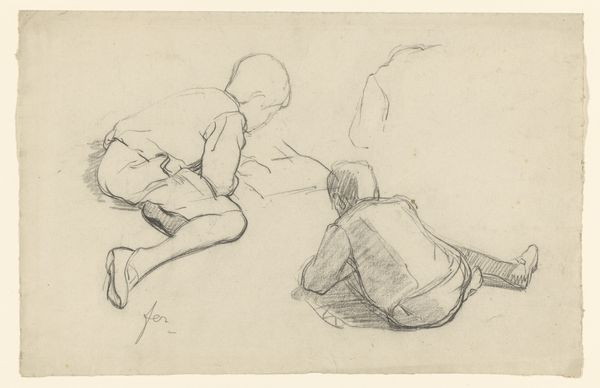
drawing, pencil
#
portrait
#
drawing
#
pencil sketch
#
charcoal drawing
#
figuration
#
pencil drawing
#
intimism
#
underpainting
#
pencil
#
academic-art
#
realism
Dimensions: height 349 mm, width 237 mm
Copyright: Rijks Museum: Open Domain
Albert Neuhuys sketched this figure in bed with what appears to be graphite on paper. The reclining figure, a motif as old as art itself, carries echoes of vulnerability and introspection. Consider the ancient Roman sarcophagi, where the deceased are depicted reclining as if at an eternal banquet, a symbol of afterlife celebration. Yet, here, the mood is far from festive. The figure's closed eyes and relaxed posture speak more of surrender, a private moment of respite or perhaps resignation. The pose evokes a sense of universal human experience—the need to withdraw, to seek refuge from the world. The act of lying down itself is significant. Across cultures, it symbolizes rest, healing, or even death. In dreams, Freud might argue, such a posture could represent a desire for regression, a return to the safety of the womb. Neuhuys captures not just a physical state, but a psychological one, tapping into our collective memory of repose and vulnerability. This image is a window into the timeless human need for solace.
Comments
No comments
Be the first to comment and join the conversation on the ultimate creative platform.


